When Allen James Lynch Graduated from high school, he knew he would either have to go to a college or trade school or wait to get drafted. He decided to chart his own course and join the Army. He didn't want to wait for something to happen to him, so he made his way to a recruiter.
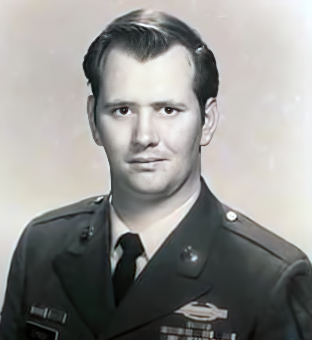 "I wasn't the hero you read about in books, you know," Allen said in a 2011 interview. "I was bullied a lot, pushed around in grade school, high school. I had a bad self-image. I had to test myself… I had to figure out who I was."
"I wasn't the hero you read about in books, you know," Allen said in a 2011 interview. "I was bullied a lot, pushed around in grade school, high school. I had a bad self-image. I had to test myself… I had to figure out who I was."
So he joined the Army in 1964. Two years later, he volunteered to serve in Vietnam. Lynch arrived there with Company D, 1st Battalion of the 12th Cavalry Regiment, 1st Cavalry Division (Airmobile) on May 31, 1967. Around six months later, he would be fighting for his life and the lives of his fellow soldiers. For his acts of astonishing bravery under fire, he would receive the Medal of Honor.
In December 1967, the Chicago native was a specialist four with his unit in South Vietnam's Binh Dinh Province. Lynch was his company's radio telephone operator when it was near the village of My An.
"We had been in the field for quite a long time," he said. "We'd been chasing the North Vietnamese and the VC quite a lot during November and December. There were a lot of firefights and contact, so they pulled us out to stand down."
They were enjoying some time off, along with the clean showers, hot food, and trips to town that came with it, when one day, they were called into a briefing. A Company had been ambushed in the field and were calling for help. Lynch's company was assigned to Air Assault in the next day at 0030 to relieve them.
The air assault landed them near the village of My An. Company D moved around the landing zone to meet A Company at its flank. They didn't know they were walking into an even greater trap.
"A Company was the bait," Lynch said. "The North Vietnamese were dug in. There were spider holes, they were in hooches, they were in trees, they were everywhere. They let us move in, and we walked into an ambush."
Outnumbered, one of his company's point men tried to move back; his partner was wounded in both legs. The point man was shot trying to make his way back. Lynch retrieved the wounded man under intense enemy fire and brought him back to friendly lines. Knowing there was another wounded soldier out there, Lynch dropped his radio and dashed for the wounded man.
While Lynch was retrieving the wounded, he found himself pinned down. A third soldier attempted to join Lynch but was shot down for his trouble. Lynch went out and retrieved the third wounded soldier. The fire was so intense he was forced to move back to his pinned-down position.
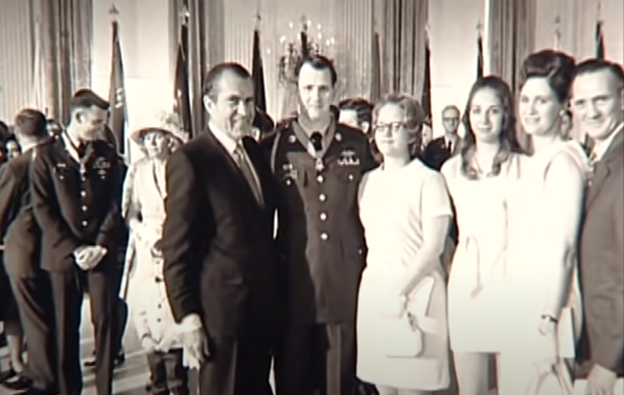 Lynch aided the two wounded men, unable to move either back to friendly lines. He made his way across the deadly battlefield to check out a trench but found two enemy soldiers in it. He cleared the trench at point-blank range, then moved one of the wounded through the hail of gunfire to the safety of the trench. Then, he went back for the other man.
Lynch aided the two wounded men, unable to move either back to friendly lines. He made his way across the deadly battlefield to check out a trench but found two enemy soldiers in it. He cleared the trench at point-blank range, then moved one of the wounded through the hail of gunfire to the safety of the trench. Then, he went back for the other man.
The three soldiers stayed in the trench, receiving small arms fire from the North Vietnamese and Viet Cong guerrillas while taking close air support fire from their own side. For two hours, Lynch defended their isolated trench, even as the communists advanced on them. He killed five enemy soldiers right in front of his trench.
Finally, he was able to carry both men across another exposed area to a more secure position. As he took up his new spot, he identified an American force making a counterattack. With help keeping the wounded safe, he coordinated a friendly advance while evacuating the wounded men. Lynch crossed the deadly terrain five times to rescue the wounded, risking his own life with each trip.
With the wounded evacuated, Lynch had a few "liquid refreshments" before rejoining his unit for another standdown. When he finally returned with his company, he learned they'd put him up for the Medal of Honor. On Armed Forces Day, 1970, Lynch was presented with the medal by President Richard Nixon, along with 11 other recipients.
"I was so blown away when they put that medal around my neck; I never realized the impact it would have on my life."
The American Revolution did not start off the way the Americans had hoped. By Christmas night, 1776, morale was lower than it had ever been. The British Army had captured New York the previous summer, and men were beginning to desert as Washington's Army camped across the Delaware River from occupied Trenton, New Jersey.
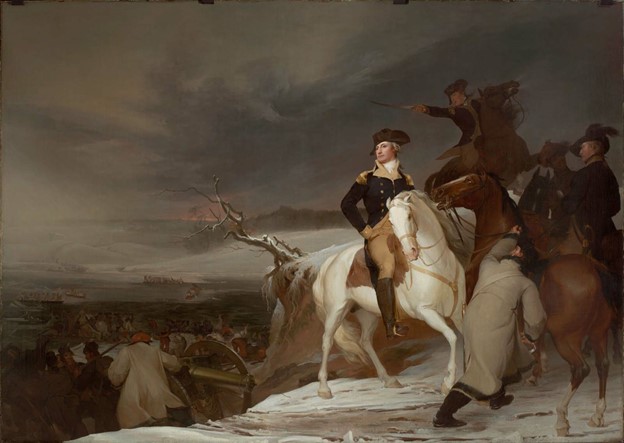 What men Washington had left were largely inexperienced, as most of the veterans from the Battle of Long Island went home when their enlistments were up. Even Washington himself was unsure of the near future. All was not lost, however. He did have a few factors in his favor.
What men Washington had left were largely inexperienced, as most of the veterans from the Battle of Long Island went home when their enlistments were up. Even Washington himself was unsure of the near future. All was not lost, however. He did have a few factors in his favor.
For starters, his forces outnumbered those of the Hessian mercenaries who occupied Trenton. He also had a solid intelligence source inside Trenton, providing information on the numbers, movements, and dispositions of the enemy. Washington decided to craft a perfectly-detailed attack that would surprise the Hessians and give the Americans a badly-needed win.
Washington decided to cross the river on Christmas night at three different locations, leading the largest contingent himself. The second force was to cross further south and create a diversionary assault on the town. A third column was to occupy the bridge just south of Trenton and prevent the Hessians from making a retreat.
Beginning their preparations on Dec. 23, 1776, Washington's Army just happened to have everything they needed to cross the river. In retreating from New York and New Jersey, the Americans brought watercraft with them during their retreat to prevent the British from using them. The Army also had experienced river pilots from New England among them, essential to navigating the perilous river. The local Pennsylvania Navy also came to help.
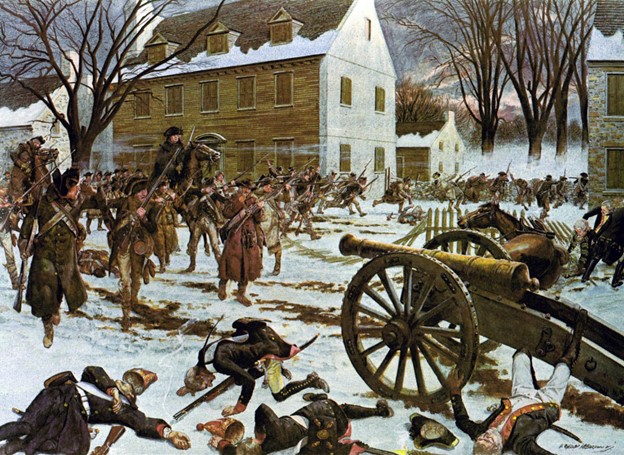 The first casualty of Washington's crossing was the plan. By the time his force reached the crossing, Washington was already two hours behind schedule. His men, hungry and tired, had to march to even reach the crossing site. To make matters worse, the weather was turning on them. What had begun as a cold drizzle quickly became an icy nor'easter.
The first casualty of Washington's crossing was the plan. By the time his force reached the crossing, Washington was already two hours behind schedule. His men, hungry and tired, had to march to even reach the crossing site. To make matters worse, the weather was turning on them. What had begun as a cold drizzle quickly became an icy nor'easter.
Crossing the river was hazardous, considering the amount of floating ice and the sheer volume of men, horses, and artillery (18 pieces in all) that made the crossing difficult. It was so bad the other two columns didn't even make it across. The Army wasn't ready to move until 0400 that morning, and Washington was on his own.
He split his force into two and approached Trenton from two directions. The Hessians had been fighting random skirmishes with patriot militia in the days preceding Washington's surprise attack. When night came, they would be forced to exchange gunfire with unseen attackers, often falling prey to false alarms. The German troops were exhausted.
Given the weather, their commander, Johann Rall, determined that no one would make a surprise attack in the windy, blustering snow. He and his officers spent the evening drinking with the local postmaster, who was secretly a patriot supporter. When Washington attacked, Rall was drunk, tired, and unable to respond effectively.
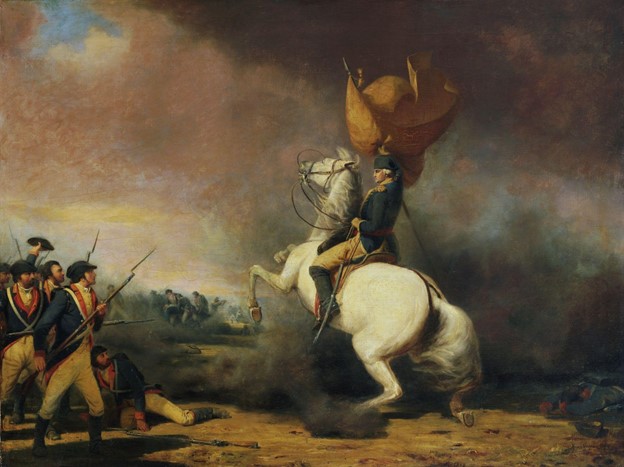 The patriot forces caught them completely by surprise, killing 22 (including Rall), wounding 83, and taking nearly 1,000 prisoners, along with a considerable supply of powder, weapons, and artillery.
The patriot forces caught them completely by surprise, killing 22 (including Rall), wounding 83, and taking nearly 1,000 prisoners, along with a considerable supply of powder, weapons, and artillery.
At a time when European armies entered quarters for the duration of the winter, Washington kept moving, which kept the British and Hessians on their heels. Although he retreated across the river that same day, American morale was restored, men began to re-enlist, and colonial support for the rebellion grew.
With his full Army, Washington next brought the fight to the British, mauling them at Assunpink Creek and Princeton on successive days before going to winter quarters in January 1777. By Spring, even more men had joined the new patriot army.


TWS has expertly "drawn out" memories and recollections of past events and years in the Corps. It is amazing how one topic leads into another - hidden vignettes seem to multiply - and rekindle occasions that made an impact on you, for better or worse. done or seen until way after the fact. Some small event or funny remembrance will 'hop up' in your mind, and it expands from there. Names, faces, places, and even the most insignificant happening - can rekindle memories from the past. For example, while at The Basic School, the TBS staff often sought volunteers to host visiting dignitaries, which volunteers didn't overrun. In a moment of weakness, I said, " Why not" and volunteered to be the host for a speaker, MGen Fontana, who was the CG, 2dMAW. The hosting consisted of keeping the general amused, and his drink refilled, and probably did not last over 2 hours. It just so happened that he was a most charming and extremely congenial individual, and I had a good evening (doing what no one else had wanted to do.)
LtCol Carl McClain US Marine Corps (Ret)
Served 1966-1992
Movies and television have painted a deeply embedded picture of Vietnam veterans in the American collective consciousness. Somehow, despite the numerous books, articles, and documentaries produced about the war and those who fought it, some of them are simply untrue.
The false ideas aren't just small myths, either. These misconceptions paint a distorted picture of who fought in Vietnam and the ability of the enemy and shaped how we perceived war for decades after the conflict ended. Here are the most common myths about the Vietnam War that civilians really believe, along with the truth about them.
1. The U.S. won every battle of the Vietnam War but still lost the war.
If anyone told this myth to the veterans who fought at Lang Vei in 1968, Kham Duc later that same year, or Fire Support Base Ripcord in 1970, they'd probably get a sharp, curt history lesson in logistics and math. Movies and television make it seem like the Viet Cong (VC), and People's Army of Vietnam (PAVN) attacked in human waves with no armor, air force, or artillery.
In reality, PAVN forces had a lot to work with, were careful planners, and used everything they could to level the playing field with U.S. firepower, including weather, hours of darkness, and the civilian population. To undermine the enemy's ability is to do a disservice to those who made gallant stands in the face of overwhelming odds, whether they won or lost.
As for losing the war, the U.S. might have failed to meet its objectives in Vietnam, but Communism was not spread to other "domino theory" countries like Singapore, Malaysia, Indonesia, Thailand, or the Philippines. The Vietnam War was the turning point for global Communism.
2. The Viet C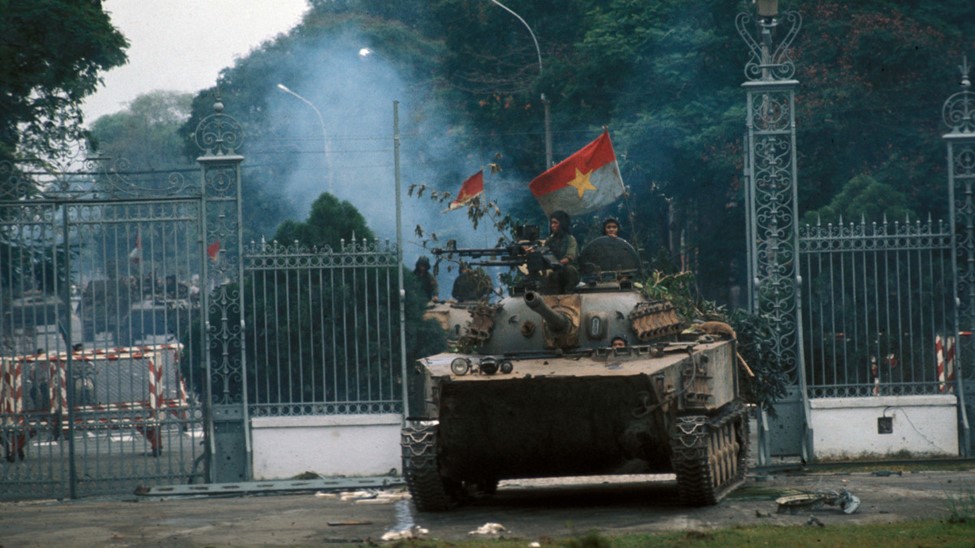 ong were a bunch of plucky, underequipped farmers.
ong were a bunch of plucky, underequipped farmers.
The VC were pro-Communist guerrillas operating in South Vietnam, Laos, and Cambodia. They were often portrayed as bands of fighters, poorly supplied and using old weapons to make random ambushes on U.S. troops across the South. Although they were probably often hungry and poorly provided with food, the VC was well-coordinated from Hanoi.
To top it off, North Vietnam began receiving funds, arms, and supplies from Communist China and the Soviet Union from the first days of American involvement in Vietnam, starting in 1964. More than $3.2 billion in military aid flooded into the South in the form of rocket launchers, grenades, and machine guns.
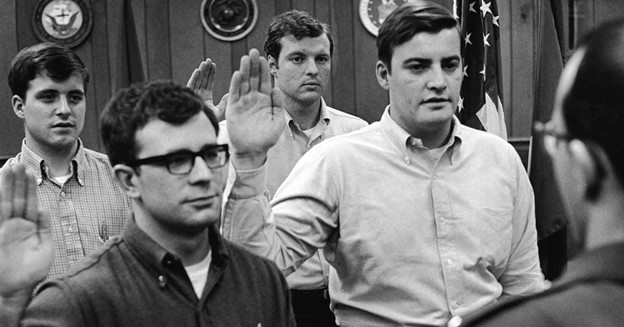 3. U.S. troops in Vietnam were mostly draftees.
3. U.S. troops in Vietnam were mostly draftees.
In 1985, the results of the National Vietnam Veterans Readjustment Study of the Research Triangle Institute were released, which should have put this myth to bed forever. It revealed that 70% of the 2.7 million people who served in the Vietnam War actually volunteered to serve there, with only 11% saying they did so to avoid being drafted.
Related to this myth is the idea that the Vietnam draft relied on the poor or on minority groups to fill its ranks. Again, the myth doesn't match the facts. Only 12.7% of draftees were Black and had no significantly higher chance of dying in combat than any other race. As for drafting the poor, research from the Veterans of Foreign Wars says that 50% of combat troops were from middle-class backgrounds and that the Vietnam War's fighting force was the best-educated force of their time.
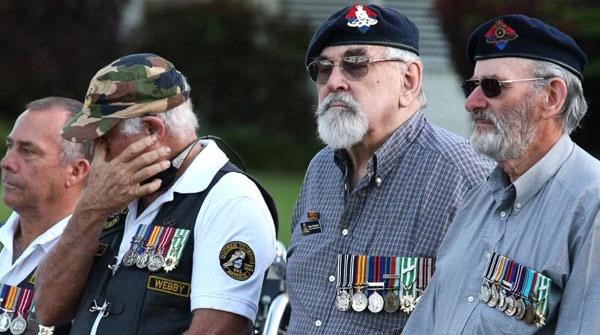 4. Vietnam veterans are primarily homeless, addicted, or crazy.
4. Vietnam veterans are primarily homeless, addicted, or crazy.
This pervasive myth might come from those who watched Lieutenant Dan in "Forrest Gump" but didn't watch the entire movie. Homelessness among veterans is a big issue, but it's not limited to Vietnam-era of veterans. There is also no difference in drug addiction rates between Vietnam veterans and civilians from the same age group.
97% of Vietnam veterans left the military with an honorable discharge. Furthermore, by 1987, the unemployment rate among Vietnam vets was 4.8%, while the rest of the country faced a 6.2% unemployment rate. They earned 18% more on average than non-veterans and are less likely to be in prison. Just like Lt. Dan at the end of "Forrest Gump," Vietnam veterans got their stuff together.
Scammers are targeting Veterans to access their PACT Act benefits
On August 10, President Biden signed the Honoring Our PACT Act of 2022 into law. This bill will help millions of Veterans and their survivors, but scammers are now targeting them for their benefits.
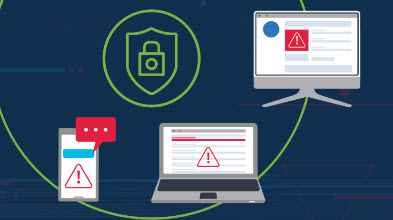 Tips to Avoid PACT Act Scammers
Tips to Avoid PACT Act Scammers
Scammers are taking advantage of new opportunities to commit fraud. There’s been an increase in PACT Act-related phishing (email), vishing (phone), and social media scams targeting Veterans to access their PACT Act benefits or submit claims on their behalf.
Veterans should be cautious of anyone who guarantees a lucrative financial benefit or service. To report suspected fraudulent activity, please get in touch with [email protected] or call (800) 488-8244.
Protect yourself against new scams and scammers with these tips:
Do not provide personal, benefits, medical, or financial details online or over the phone. Federal agencies will not contact you unless you make a request.
Do not click on online ads or engage with social media that seem suspicious.
Check for “HTTPS://” at the start of website addresses.
Enable multi-factor authentication on all accounts.
Work with Veteran service providers you already know.
Submit any suspected fraud to ftc.gov.
How to Apply for PACT Act Benefits
The PACT Act extends VA health care eligibility for Veterans with toxic exposures and Veterans of the Vietnam, Gulf War, and Post-9/11 (Post-September 11, 2001) eras. It also expands benefits eligibility for Veterans exposed to toxic substances and their survivors.
We want Veterans and survivors to apply now for their PACT Act-related benefits. You can learn more and sign up at www.va.gov/PACT or call us at 1-800-MyVA411 (1-800-698-2411).
If you need help applying for benefits, VA, accredited representatives, and Veteran Service Officers are always standing by and ready to help. There’s no cost for the forms, no fees to apply, and VA will never charge Veterans for processing a claim.
Visit the Cybercrime Support Network for additional resources to help Veterans, service members, and their families combat cybercrime.

Without TWS, I would not have been able to put together a timeline of my own military history, and a lot of my experiences would have been lost. In taking the time to reflect on my own service, it has caused me to reconnect with many of the soldiers I served with in the past. It has also helped me to put together my awards and decorations so that my family can see what I've done and where I've been. In this way, I can share my military experiences with my family and with my grandchildren. TWS has also helped me to connect with many friends I served with, and for that, I am eternally grateful.
Major Dan Denny US Army Reserves (Ret)
Served 1974-2004
Saint Barbara might be one of the more obscure saints in Catholic and Orthodox legend, but she's venerated by U.S. military field artillery. On or around her feast day every Dec. 4, artillerymen gather to eat a large meal, toast Saint Barbara with the finest artillery punch and induct new members into the Order of Saint Barbara.
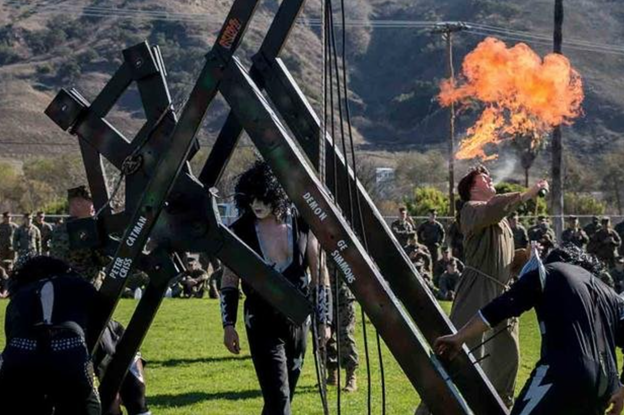 There's even a handy (but lengthy) instruction manual from the U.S. Field Artillery Association on how to conduct a Saint Barbara Celebration properly because she's the patron saint of artillery - and they take that patronage pretty seriously.
There's even a handy (but lengthy) instruction manual from the U.S. Field Artillery Association on how to conduct a Saint Barbara Celebration properly because she's the patron saint of artillery - and they take that patronage pretty seriously.
Be advised: Barbara's story is a grisly one.
Legend has it that Dioscorus, a wealthy pagan merchant in third-century Phoenicia (modern-day Lebanon), had a beautiful daughter. She was so beautiful, in fact, that he locked her in a tower to keep male suitors he deemed undesirable away from her. Dioscorus was especially worried that she might fall for a Christian, a new but outlawed religion growing in popularity among the poor at the time.
Dioscorus was personally devoted to the Roman religion, but more importantly, he knew that any deviation from the faith would hurt him politically and destroy his business. Despite his efforts, Barbara learned about Christianity anyway and grew ill with the desire to learn more. Her father sent a doctor to heal her, but the doctor was actually a priest who baptized Barbara and converted her.
When her father found out, he demanded she renounce the faith. When she refused, he turned her over to the Romans, who tortured her. Yet, every morning of her captivity, her wounds were healed, and she again refused. The Romans then paraded her through the town naked. According to legend, angels created a dense fog to obscure her from view as she walked through the streets. Finally, the Romans ordered Dioscorus to kill her.
Her father first tried to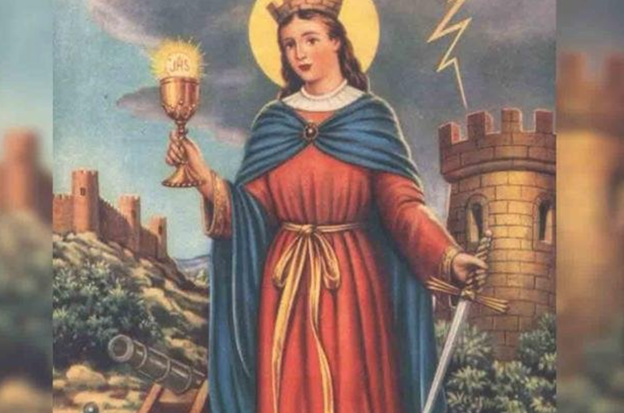 burn her alive, but every time he put a torch to her, the flame went out. After a few attempts, he carried out Barbara's execution by cutting off her head. The moment the deed was done, flames erupted from her body, and her father was struck by lightning as punishment, killing him instantly.
burn her alive, but every time he put a torch to her, the flame went out. After a few attempts, he carried out Barbara's execution by cutting off her head. The moment the deed was done, flames erupted from her body, and her father was struck by lightning as punishment, killing him instantly.
Since her veneration years after her death, the name of Saint Barbara was used to pray for protection against getting struck by lightning, in addition to sudden death by explosions or fires. Gunners in the 17th century adopted Saint Barbara because their cannons were less than reliable - not a bad idea when working with a new technology that might explode in your face.
That military tradition extended to the new United States, which celebrates Saint Barbara today. Marines, Soldiers, and civilian supporters "demonstrating a degree of professional competence and contributions to the promotion of the artillery branch" are awarded the Order of Saint Barbara by the Honorable Order of Saint Barbara, a panel made up of previous recipients.
Russia's February 2022 invasion of Ukraine may have displaced 7.1 million Ukrainians, creating the largest refugee crisis in Europe since World War II, but it also created a resolve among Ukrainians who stayed put. Ukrainian reservists, combat veterans, and even some civilians who stayed behind were integrated into the country's military as the Territorial Defence Forces (TDF).
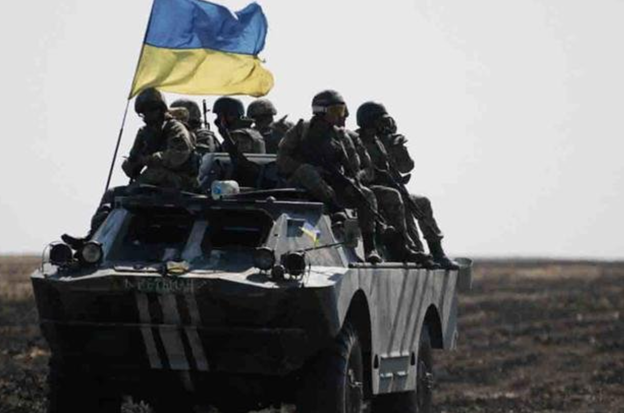 Jerry Hultin, a former undersecretary of the Navy under President Bill Clinton, says it was the 100,000 members of the Territorial Defence Forces who stopped the drive to Kyiv and put Russia on its heels. The intervention of irregular civilian fighters forced Russia to change its strategy from capturing Kyiv to fighting a war of attrition.
Jerry Hultin, a former undersecretary of the Navy under President Bill Clinton, says it was the 100,000 members of the Territorial Defence Forces who stopped the drive to Kyiv and put Russia on its heels. The intervention of irregular civilian fighters forced Russia to change its strategy from capturing Kyiv to fighting a war of attrition.
As the Russian drive stalled, Hultin and a handful of veterans, defense officials, and logistics experts created Fighting Chance Ukraine. This nonprofit network helps fund and supply the TDF, who are usually fighting with fewer weapons and equipment than the regular army.
"It was often small groups of civilians organizing themselves that really stopped that drive south and turned the war," Hultin tells Military.com. "That resonated with us: ordinary people, families, joining in. The husband would go to the front line. The wife would take care of the kids, and together, they try to have a life. They teamed up and really changed the war."
Hultin says the TDF makes a huge tactical difference in battles and frees up the regular military to make advances, such as the offensive currently underway in the country's south.
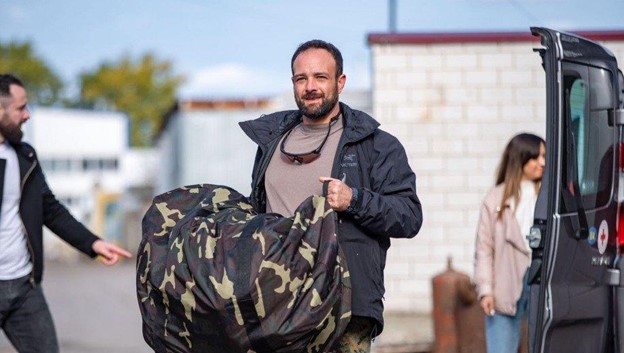 Fighting Chance Ukraine was formed in conjunction with the Ukrainian Congress Committee of America and is made up of members with diplomatic, military, and logistical experience and connections in Europe, including former U.S. ambassador to Ukraine John Herbst, and a former Supreme Allied Commander, Retired Gen. Philip Breedlove.
Fighting Chance Ukraine was formed in conjunction with the Ukrainian Congress Committee of America and is made up of members with diplomatic, military, and logistical experience and connections in Europe, including former U.S. ambassador to Ukraine John Herbst, and a former Supreme Allied Commander, Retired Gen. Philip Breedlove.
"We all, for our own reasons, had skills to bring and felt this was a place that we could really make a difference," Hultin says. "There are those who know what it takes to help educate people and get them engaged. We have international relief experts who know how to find things and get them shipped, and we have networks on the ground in Ukraine who tell us what is needed."
After learning from the TDF what supplies are needed, the group raises money and procures those supplies in the U.S. Using their networks; they move equipment to areas adjacent to Ukraine, like Poland or Lithuania. The materials are then shipped into Ukraine and distributed.
Fighting Chance Ukraine has provided everything from basic needs like food, blankets, and medical supplies to non-lethal aid such as helmets, boots, backpacks, flak vests, night-vision goggles, encrypted cell phones, radios, walkie-talkies, drones, GPS, computers and satellite services.
"It's the first time in many years where we're supporting a country where there's a real depth of support inside that country for providing freedom and supporting democracy," Hultin says. "I fought in Vietnam, and we didn't have the support that we should have from the South Vietnamese. We've seen some of that be true in Afghanistan and also in Iraq, but Ukraine's different. We've really seen the population create new ways to approach things and volunteer."
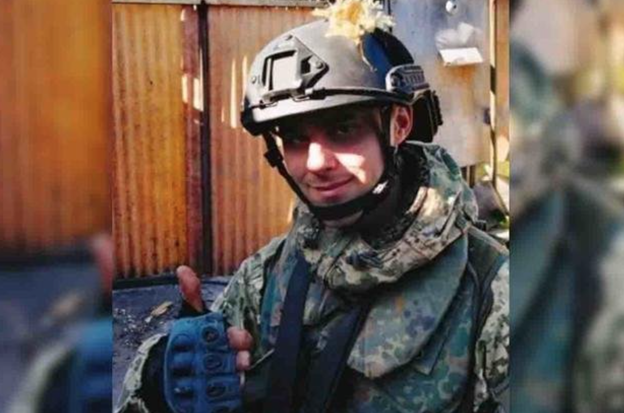 For Hultin, the fact that Ukraine has not lost its resolve and has pushed Russian forces back is significant. There may come a time when Russia determines that a continuation of the war is not in its best interest.
For Hultin, the fact that Ukraine has not lost its resolve and has pushed Russian forces back is significant. There may come a time when Russia determines that a continuation of the war is not in its best interest.
"I think we're right on the cusp, and that's why Fighting Chance Ukraine is so important," Hultin says. "First, it allows American military families to support Ukrainian military families, and secondly, it encourages and keeps the capacity of Ukraine to win and push back the Russians."
Americans identify with Fighting Chance Ukraine, Hultin believes, because they can identify with a fight for freedom against an overwhelmingly powerful opponent. Young Americans who still want to do something to help look for organizations like Fighting Chance Ukraine.
"It's part of our history to defend democracy," says Hultin. "Those of us who are veterans, who have fought in our wars from Vietnam, Iraq, and Afghanistan, know what combat's like. They know how hard it is on the front lines. Citizens in Ukraine are on the front lines, and they need the kind of support that American military families and veterans can provide."
To learn more about Fighting Chance Ukraine or to donate money for nonlethal support to the Ukrainian Territorial Defence Forces, visit FightingChanceUkraine.org.
When you are seventeen, you know almost nothing, but you think you are grown up and know everything there is to know.
I was a child in a man's body...
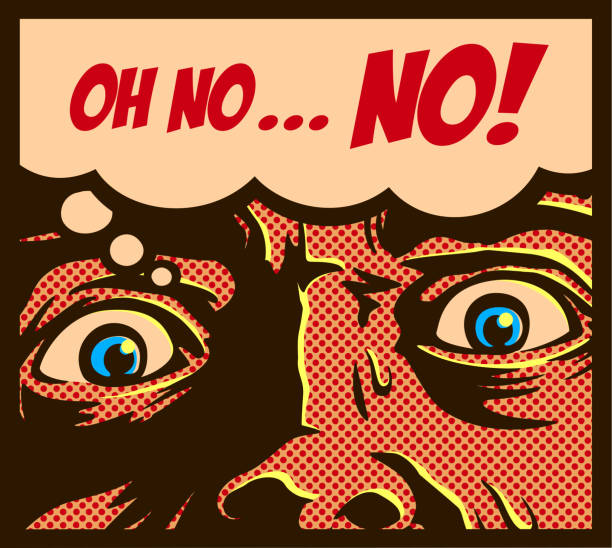 The thinking I was all grown up led me to volunteer for the US Army one week out of high school. (June 1959) Uncle Sam loved me; he knew I was still a work in progress - even if I didn't. He knew I could be molded into whatever weapon or piece of machinery he needed. Despite living a hard-scrabble life and thinking I had a plan - he knew I was still a baby.
The thinking I was all grown up led me to volunteer for the US Army one week out of high school. (June 1959) Uncle Sam loved me; he knew I was still a work in progress - even if I didn't. He knew I could be molded into whatever weapon or piece of machinery he needed. Despite living a hard-scrabble life and thinking I had a plan - he knew I was still a baby.
I sailed through basic training and advanced training - it was a breeze. I earned a Sharpshooters badge even though I had never fired a gun until we were put out on the rifle range. After several months of training, I was assigned to the 29th Signal Battalion in Karlsruhe, Germany. I was finally going to get my first view and taste of the world. Then...
Something bigger and stronger than I gripped my senses. There was no escape.
We were marched to the airfield and put on an airplane - kindly remember that I had never flown before, had never even seen an airplane except the occasional one that flew high in the sky over the little mountain valley where I had spent those first seventeen growing years. Now it was Ft. Gordon, Ga. To Ft. Dix, New Jersey, and on to Frankfurt, Germany.
Nothing could have prepared me for what I faced as the airplane roared down the runway and took to the air. I was terrified. Years later, I still have trouble finding the words to tell how it felt.
I am going to die...now.
That was the voice I heard. It did not get any better when I did not immediately pass away. I did pass out. When I came to, I had wet my pants, and the sure knowledge of my demise was even stronger. I got to the bathroom, vomited breakfast, tried to clean myself up somewhat, put my field jacket over my head, and kept my eyes closed for the rest of the long trip. Nothing helped. Nobody noticed. I repeated the event from Ft. Dix, New Jersey, to Germany. I could barely stand when we finally arrived. It took days to recover.
I had never flown before and had not even been in a car going more than 30 or 40 miles, in fact. I did not feel so grown up at that point, but I had two and a half years to put it all behind me. The young can forget - fortunately for me. A year and a half in France helped this forgetting process. I came home by slow boat from Germany, and I put that bad experience behind me as best I could.
Despite it all
I asked for more,
more life,
more living.
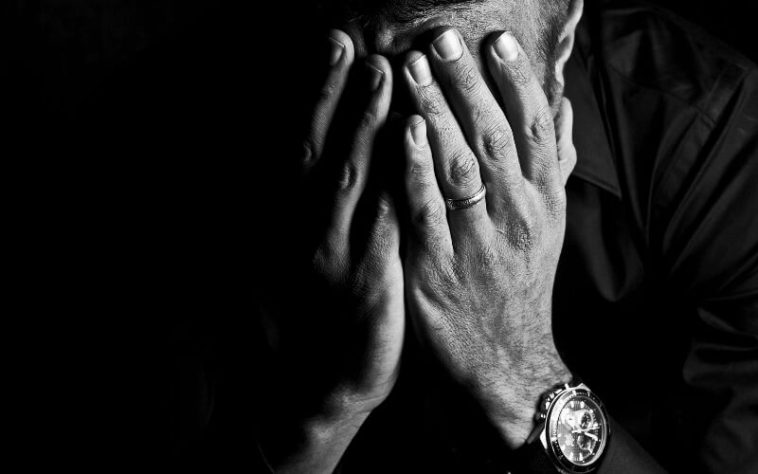 I grew into my twenties, thirties, and forties without major incidents. I couldn't afford to fly anywhere and never drove fast, so it was a non-issue. And then one day, the old remembered feelings came back!
I grew into my twenties, thirties, and forties without major incidents. I couldn't afford to fly anywhere and never drove fast, so it was a non-issue. And then one day, the old remembered feelings came back!
I was in the midst of caregiving for someone I loved. I had driven to Florida from Stone Mountain, Georgia, with no problems. On the way back, I began to feel that old familiar panic - I slowed down. My friend, who could not drive because of illness, never said a word as I struggled for control. It took me around 14 hours to get back (an 8-hour trip typically), but I did make it back home. In the months following, I got even worse. I could not go onto the expressway to drive. I couldn't even ride the Marta Train! As my friend passed, so did some of the fear, but I lost a job because I was afraid to ride the train or bus.
I ran away to my childhood mountains and stayed for six years before I felt strong enough to venture out again. I wasn't happy to be so afraid - but I could not face the idea of panicking - speed and motion were my enemies, and I had trouble going faster than 20 miles per hour during that period.
Older, wiser now
I compensate.
I apologize and
I make do.
The Veterans Dept (in Virginia, I lived in Norfolk for a time) gave me some help in coping with my panic attacks or phobias. I learned to breathe slowly and deeply, read and think about other things. They did not accept any responsibility for my condition. As a matter of fact, the doctor (I wish I could remember his name) refused to discuss that first attack at all. I went to Hampton, Va., for these sessions. I don't suppose I will ever be normal again. But then, what IS normal?
Still, I have
enjoyed my life.
I found ways
around the fear.
 I take drugs when I must fly, and I depend on someone else driving when going any distance. I never drive on major highways and try not to ride on one. The US Army does not recognize that they did anything wrong - truly, nobody could have foreseen what that 1959 flight would do, how it would color the rest of my life. I have learned to live and love and continue despite the very real fear that has dogged me for the past sixty-some years - keeping me out of the air and off the highway, but I have never let it keep me from writing, from thinking, and living my life as best I can.
I take drugs when I must fly, and I depend on someone else driving when going any distance. I never drive on major highways and try not to ride on one. The US Army does not recognize that they did anything wrong - truly, nobody could have foreseen what that 1959 flight would do, how it would color the rest of my life. I have learned to live and love and continue despite the very real fear that has dogged me for the past sixty-some years - keeping me out of the air and off the highway, but I have never let it keep me from writing, from thinking, and living my life as best I can.
I thought at the time the doctor in Virginia thought I was trying to blame the Army and get some compensation because of my Phobias. That was not my intention then or now. I joined the Army to see some of the world - and I did just that. Nobody knew what that plane ride could do - how it would affect me for the rest of my life. Now at eighty years of age. I am still unable to cope with height or speed, or motion. I depend on someone else to take me places - I need drugs to fly on a plane, and I have trouble going more than 50 miles per hour in an automobile. I can't even watch action movies where someone else is climbing, falling, driving, or flying. And I have accepted the fact that at eighty-plus, nothing is going to change. I was ashamed of how I felt back then, and over the years - I still find it difficult to explain or talk about it. The fear is just as real today as it was in 1959 - I have only to step over the line - and it is all instantly recalled. I try not to. It feels like some sort of punishment when I try to explain.
John L. Nicholson (06/26/1941)
Apache Junction, Arizona
[email protected]
If you have a story you would like to see published in Dispatches, please submit it to [email protected], and we'll put it in our schedule. Please include some photos that help tell your story.

TWS has given me a place to share my memories, a place to find others and make new friends that "get it." I like that I have a place to keep my military history, and I truly encourage others to do so. You won't regret it.
MKFN Robert Metell US Coast Guard Veteran
Served 1974-1978
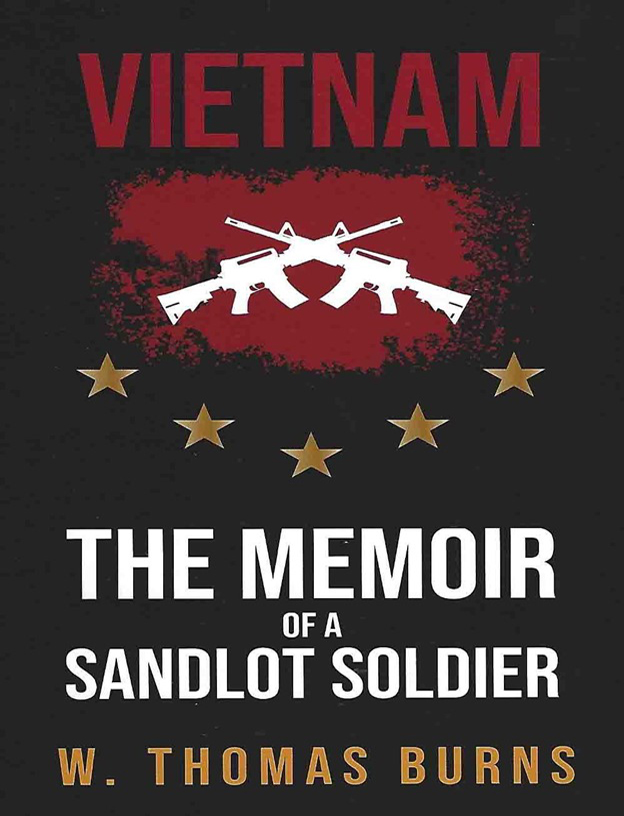 Like many young men who came of age in the late 1960s, W. Thomas Burns joined the military and found himself in Vietnam. Burns, despite the title of his memoir, was a United States Marine who joined the Corps in 1967. By May of 1968, he was in-country, fighting with 2nd Battalion, 4th Marine Regiment, 3rd Marine Division.
Like many young men who came of age in the late 1960s, W. Thomas Burns joined the military and found himself in Vietnam. Burns, despite the title of his memoir, was a United States Marine who joined the Corps in 1967. By May of 1968, he was in-country, fighting with 2nd Battalion, 4th Marine Regiment, 3rd Marine Division.
"Vietnam, The Memoir of a Sandlot Soldier" isn’t a book about strategy, tactics, or the history of the war. Unlike many books about the Vietnam War, it has no political slant. Bruns wrote a book about what serving in Vietnam was really like. It reads more like a diary, without explicitly being one, but it’s not just a diary of his own experiences. Burns relates the experiences of other troops who fought in Vietnam alongside him.
At just 19 years old, Burns was wounded after eight months of slugging it out with the enemy in the jungles and mountainous terrain of the country. He would eventually be medevaced to the United States, but he documented his thoughts and experiences at the time. These notes and writings would form the basis of "Vietnam, The Memoir of a Sandlot Soldier” 50 years later.
The book doesn’t go in-depth on his combat experiences or how to fight in the Vietnamese jungles; instead, Burns' focus is on the people he served with and the larger-than-life leaders who would come to help shape his formative years.
Burns and the stories he tells are filled with valor and patriotism. His stories are told simply but eloquently; the book is a perfect read for anyone interested in the lives and stories of Vietnam-era combat Marines, whether they served or found themselves glued to the news during the Vietnam Era.
His book is a quick but engaging read that will keep readers interested while they learn about the lives of the men who went out into the bush, in and out of combat. "Vietnam, The Memoir of a Sandlot Soldier” is available in hardcover for $14.99 and in paperback for $9.99 on Amazon. It’s also available as an ebook.
 "I wasn't the hero you read about in books, you know," Allen said in a 2011 interview. "I was bullied a lot, pushed around in grade school, high school. I had a bad self-image. I had to test myself… I had to figure out who I was."
"I wasn't the hero you read about in books, you know," Allen said in a 2011 interview. "I was bullied a lot, pushed around in grade school, high school. I had a bad self-image. I had to test myself… I had to figure out who I was."  Lynch aided the two wounded men, unable to move either back to friendly lines. He made his way across the deadly battlefield to check out a trench but found two enemy soldiers in it. He cleared the trench at point-blank range, then moved one of the wounded through the hail of gunfire to the safety of the trench. Then, he went back for the other man.
Lynch aided the two wounded men, unable to move either back to friendly lines. He made his way across the deadly battlefield to check out a trench but found two enemy soldiers in it. He cleared the trench at point-blank range, then moved one of the wounded through the hail of gunfire to the safety of the trench. Then, he went back for the other man. 

 What men Washington had left were largely inexperienced, as most of the veterans from the Battle of Long Island went home when their enlistments were up. Even Washington himself was unsure of the near future. All was not lost, however. He did have a few factors in his favor.
What men Washington had left were largely inexperienced, as most of the veterans from the Battle of Long Island went home when their enlistments were up. Even Washington himself was unsure of the near future. All was not lost, however. He did have a few factors in his favor. The first casualty of Washington's crossing was the plan. By the time his force reached the crossing, Washington was already two hours behind schedule. His men, hungry and tired, had to march to even reach the crossing site. To make matters worse, the weather was turning on them. What had begun as a cold drizzle quickly became an icy nor'easter.
The first casualty of Washington's crossing was the plan. By the time his force reached the crossing, Washington was already two hours behind schedule. His men, hungry and tired, had to march to even reach the crossing site. To make matters worse, the weather was turning on them. What had begun as a cold drizzle quickly became an icy nor'easter. The patriot forces caught them completely by surprise, killing 22 (including Rall), wounding 83, and taking nearly 1,000 prisoners, along with a considerable supply of powder, weapons, and artillery.
The patriot forces caught them completely by surprise, killing 22 (including Rall), wounding 83, and taking nearly 1,000 prisoners, along with a considerable supply of powder, weapons, and artillery. 


 ong were a bunch of plucky, underequipped farmers.
ong were a bunch of plucky, underequipped farmers. 3. U.S. troops in Vietnam were mostly draftees.
3. U.S. troops in Vietnam were mostly draftees.  4. Vietnam veterans are primarily homeless, addicted, or crazy.
4. Vietnam veterans are primarily homeless, addicted, or crazy. 
 Tips to Avoid PACT Act Scammers
Tips to Avoid PACT Act Scammers
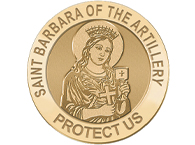
 There's even a handy (but lengthy) instruction manual from the U.S. Field Artillery Association on how to conduct a Saint Barbara Celebration properly because she's the patron saint of artillery - and they take that patronage pretty seriously.
There's even a handy (but lengthy) instruction manual from the U.S. Field Artillery Association on how to conduct a Saint Barbara Celebration properly because she's the patron saint of artillery - and they take that patronage pretty seriously.  burn her alive, but every time he put a torch to her, the flame went out. After a few attempts, he carried out Barbara's execution by cutting off her head. The moment the deed was done, flames erupted from her body, and her father was struck by lightning as punishment, killing him instantly.
burn her alive, but every time he put a torch to her, the flame went out. After a few attempts, he carried out Barbara's execution by cutting off her head. The moment the deed was done, flames erupted from her body, and her father was struck by lightning as punishment, killing him instantly. 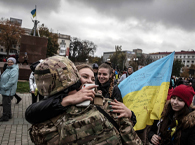
 Jerry Hultin, a former undersecretary of the Navy under President Bill Clinton, says it was the 100,000 members of the Territorial Defence Forces who stopped the drive to Kyiv and put Russia on its heels. The intervention of irregular civilian fighters forced Russia to change its strategy from capturing Kyiv to fighting a war of attrition.
Jerry Hultin, a former undersecretary of the Navy under President Bill Clinton, says it was the 100,000 members of the Territorial Defence Forces who stopped the drive to Kyiv and put Russia on its heels. The intervention of irregular civilian fighters forced Russia to change its strategy from capturing Kyiv to fighting a war of attrition. Fighting Chance Ukraine was formed in conjunction with the Ukrainian Congress Committee of America and is made up of members with diplomatic, military, and logistical experience and connections in Europe, including former U.S. ambassador to Ukraine John Herbst, and a former Supreme Allied Commander, Retired Gen. Philip Breedlove.
Fighting Chance Ukraine was formed in conjunction with the Ukrainian Congress Committee of America and is made up of members with diplomatic, military, and logistical experience and connections in Europe, including former U.S. ambassador to Ukraine John Herbst, and a former Supreme Allied Commander, Retired Gen. Philip Breedlove.  For Hultin, the fact that Ukraine has not lost its resolve and has pushed Russian forces back is significant. There may come a time when Russia determines that a continuation of the war is not in its best interest.
For Hultin, the fact that Ukraine has not lost its resolve and has pushed Russian forces back is significant. There may come a time when Russia determines that a continuation of the war is not in its best interest. 
 The thinking I was all grown up led me to volunteer for the US Army one week out of high school. (June 1959) Uncle Sam loved me; he knew I was still a work in progress - even if I didn't. He knew I could be molded into whatever weapon or piece of machinery he needed. Despite living a hard-scrabble life and thinking I had a plan - he knew I was still a baby.
The thinking I was all grown up led me to volunteer for the US Army one week out of high school. (June 1959) Uncle Sam loved me; he knew I was still a work in progress - even if I didn't. He knew I could be molded into whatever weapon or piece of machinery he needed. Despite living a hard-scrabble life and thinking I had a plan - he knew I was still a baby. I grew into my twenties, thirties, and forties without major incidents. I couldn't afford to fly anywhere and never drove fast, so it was a non-issue. And then one day, the old remembered feelings came back!
I grew into my twenties, thirties, and forties without major incidents. I couldn't afford to fly anywhere and never drove fast, so it was a non-issue. And then one day, the old remembered feelings came back! I take drugs when I must fly, and I depend on someone else driving when going any distance. I never drive on major highways and try not to ride on one. The US Army does not recognize that they did anything wrong - truly, nobody could have foreseen what that 1959 flight would do, how it would color the rest of my life. I have learned to live and love and continue despite the very real fear that has dogged me for the past sixty-some years - keeping me out of the air and off the highway, but I have never let it keep me from writing, from thinking, and living my life as best I can.
I take drugs when I must fly, and I depend on someone else driving when going any distance. I never drive on major highways and try not to ride on one. The US Army does not recognize that they did anything wrong - truly, nobody could have foreseen what that 1959 flight would do, how it would color the rest of my life. I have learned to live and love and continue despite the very real fear that has dogged me for the past sixty-some years - keeping me out of the air and off the highway, but I have never let it keep me from writing, from thinking, and living my life as best I can.

 Like many young men who came of age in the late 1960s, W. Thomas Burns joined the military and found himself in Vietnam. Burns, despite the title of his memoir, was a United States Marine who joined the Corps in 1967. By May of 1968, he was in-country, fighting with 2nd Battalion, 4th Marine Regiment, 3rd Marine Division.
Like many young men who came of age in the late 1960s, W. Thomas Burns joined the military and found himself in Vietnam. Burns, despite the title of his memoir, was a United States Marine who joined the Corps in 1967. By May of 1968, he was in-country, fighting with 2nd Battalion, 4th Marine Regiment, 3rd Marine Division.